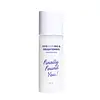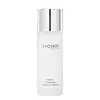What's inside
What's inside
 Key Ingredients
Key Ingredients

 Benefits
Benefits

 Concerns
Concerns

 Ingredients Side-by-side
Ingredients Side-by-side

Water
Skin ConditioningGlycerin
HumectantButylene Glycol
HumectantAcrylates Copolymer
3-O-Ethyl Ascorbic Acid
Skin ConditioningAllantoin
Skin ConditioningEthoxydiglycol
HumectantFerulic Acid
AntimicrobialAvena Sativa Kernel Extract
AbrasivePanthenol
Skin ConditioningSodium Benzoate
MaskingTriethanolamine
BufferingChlorphenesin
AntimicrobialPPG-13-Decyltetradeceth-24
EmulsifyingSodium Styrene/Acrylates Copolymer
Disodium EDTA
Polysorbate 20
EmulsifyingTocopheryl Acetate
AntioxidantPropylene Glycol
HumectantOryza Sativa Germ Extract
EmollientPentylene Glycol
Skin ConditioningTamarindus Indica Seed Gum
Emulsion StabilisingGlucose
HumectantGlycine Soja Seed Extract
Skin Conditioning1,2-Hexanediol
Skin ConditioningBeeswax
Emulsion StabilisingCitric Acid
BufferingPotassium Sorbate
PreservativeWater, Glycerin, Butylene Glycol, Acrylates Copolymer, 3-O-Ethyl Ascorbic Acid, Allantoin, Ethoxydiglycol, Ferulic Acid, Avena Sativa Kernel Extract, Panthenol, Sodium Benzoate, Triethanolamine, Chlorphenesin, PPG-13-Decyltetradeceth-24, Sodium Styrene/Acrylates Copolymer, Disodium EDTA, Polysorbate 20, Tocopheryl Acetate, Propylene Glycol, Oryza Sativa Germ Extract, Pentylene Glycol, Tamarindus Indica Seed Gum, Glucose, Glycine Soja Seed Extract, 1,2-Hexanediol, Beeswax, Citric Acid, Potassium Sorbate
Ingredients Explained
These ingredients are found in both products.
Ingredients higher up in an ingredient list are typically present in a larger amount.
You might know this ingredient as Ethyl Ascorbic Acid, a more stable version of ascorbic acid.
Like other types of vitamin C, this ingredient has many benefits including reducing wrinkles, skin soothing, dark spot fading, and fighting against free radicals.
3-O-Ethyl Ascorbic Acid interferes with the process of skin darkening, helping to reduce hyperpigmentation. It also encourages the skin to produce more collagen.
Once applied, 3-O-Ethyl Ascorbic Acid is converted to Vitamin C deeper in the skin's layers. This process is slow but makes this ingredient more tolerable for skin.
The optimum pH range for this ingredient is 4 - 5.5
Learn more about 3-O-Ethyl Ascorbic AcidGlycerin is already naturally found in your skin. It helps moisturize and protect your skin.
A study from 2016 found glycerin to be more effective as a humectant than AHAs and hyaluronic acid.
As a humectant, it helps the skin stay hydrated by pulling moisture to your skin. The low molecular weight of glycerin allows it to pull moisture into the deeper layers of your skin.
Hydrated skin improves your skin barrier; Your skin barrier helps protect against irritants and bacteria.
Glycerin has also been found to have antimicrobial and antiviral properties. Due to these properties, glycerin is often used in wound and burn treatments.
In cosmetics, glycerin is usually derived from plants such as soybean or palm. However, it can also be sourced from animals, such as tallow or animal fat.
This ingredient is organic, colorless, odorless, and non-toxic.
Glycerin is the name for this ingredient in American English. British English uses Glycerol/Glycerine.
Learn more about GlycerinPropylene Glycol is an odorless, colorless liquid. As a humectant, it helps skin retain moisture. It also aids in delivering active ingredients.
Another role of this ingredient is preventing a product from melting or freezing. Propylene glycol also adds antimicrobrial properties to a product, elongating product lifespan.
This ingredient is considered an organic alcohol and commonly added into both cosmetics and foods.
Those with sensitive skin or conditions may develop a rash when using this ingredient.
Learn more about Propylene GlycolTriethanolamine is an emulsifier and pH adjuster. It is created using ethylene oxide and ammonia. This gives Triethanolamine a nitrogen core and a similar scent to ammonia.
As an emulsifier, it prevents ingredients from separating and enhances texture by adding volume to a product.
PH adjusters are common in cosmetic products. The pH of a product can affect the effectiveness of other ingredients. A product with a high pH may also irritate the skin.
Learn more about TriethanolamineWater. It's the most common cosmetic ingredient of all. You'll usually see it at the top of ingredient lists, meaning that it makes up the largest part of the product.
So why is it so popular? Water most often acts as a solvent - this means that it helps dissolve other ingredients into the formulation.
You'll also recognize water as that liquid we all need to stay alive. If you see this, drink a glass of water. Stay hydrated!
Learn more about Water